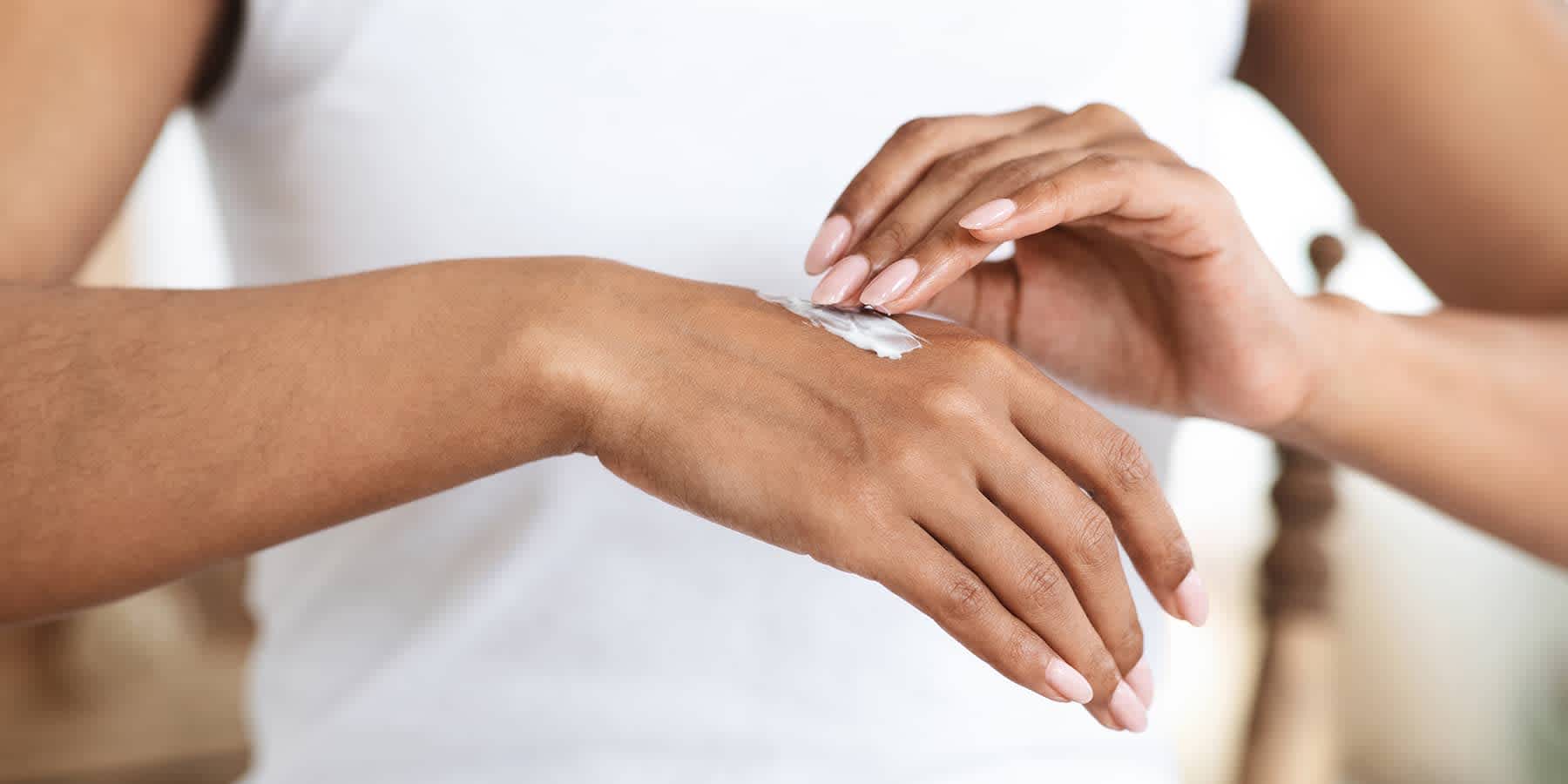
Common STDs That Cause Dry Skin in Some People
Updated November 15, 2023. Medically reviewed by Neka Miller, PhD. To give you technically accurate, evidence-based information, content published on the Everlywell blog is reviewed by credentialed professionals with expertise in medical and bioscience fields.
Table of contents
Experiencing some unusually dry skin in certain parts of your body and want to find out if a sexually transmitted infection (STI, also called an STD) could be at fault? While many STIs affect urinary and reproductive health, some can also contribute to dermatological symptoms, including rashes and dry, itchy skin. [1,2] Here, we’ll discuss STIs that cause dry skin in some cases (or related symptoms), starting with HIV—so continue reading.
Easily check for 6 common STDs from the convenience and privacy of home with the at-home STD Test for women or men.
HIV
HIV, or human immunodeficiency virus, is a virus that spreads through sexual contact or exposure to infected blood (this is the reason why sharing needles is one of the most common routes of transmission for HIV). [3]
HIV can weaken the immune system over time if it isn’t treated. Ultimately, an untreated HIV infection can harm the immune system to such a degree that it leads to acquired immunodeficiency syndrome—or AIDS. [3] If AIDS develops, the immune system is unable to effectively ward off infections of any kind, making this a life-threatening condition in many cases.
Easily check for HIV from home with the Everlywell at-home HIV Test.
HIV can contribute to a wide range of symptoms, including rashes and dry skin. [2,3]
Acute Retroviral Syndrome
Acute retroviral syndrome (ARS) describes the first stage of an HIV infection that occurs within the 2-4 weeks of exposure. [4] A skin rash is one of the potential symptoms of ARS. It usually affects the upper part of the body and can be accompanied by ulcers or canker sores in the mouth and around the genital area.
Seborrheic Dermatitis
One of the most common conditions associated with HIV, seborrheic dermatitis is an inflammatory disorder that affects the oilier parts of your body, particularly the scalp, face, and torso. [5] This can lead to scaly, flaky skin lesions that can be red or yellow. In more severe cases, it can lead to scaly pimples.
Herpes
Herpes is a common sexually and orally transmitted infection caused by the viruses in the herpes simplex virus (HSV) group. According to estimates for the United States from the National Health and Nutrition Examination Survey (NHANES), close to half of the people who are aged 14-49 have the kind of herpes associated with oral herpes, and about 1 in 8 of the people in this group have the type of herpes that’s typically responsible genital herpes. [6]
As alluded to above, a herpes infection can come from two different types of viruses, HSV-1 and HSV-2. Both can affect the mouth and genital area, but HSV-1 more often contributes to oral herpes, while HSV-2 usually causes genital herpes. [7,8] The infection spreads through skin-to-skin contact, oral sex, or unprotected vaginal or anal intercourse.
Herpes can present with no noticeable symptoms or mild symptoms that can be easy to ignore or mistake for a different condition. Blisters are the primary symptom of a herpes outbreak, typically appearing around the infected area. [9] These blisters can be uncomfortable, dry, and painful, and cause severe itching. When the blisters eventually break, they turn into sores. Herpes can be accompanied by other symptoms, including [9]:
- Burning when you urinate
- Swollen lymph nodes
- Flu-like symptoms (fever, chills, headache)
Herpes is one sexually transmitted infection that is not curable, meaning that it stays in your body for life and symptoms may reoccur. However, medication can help prevent or minimize recurring outbreaks. [10]
Syphilis
Syphilis is a common bacterial infection that spreads through sexual contact. [11] It can infect the genitals, anus, and sometimes the lips and mouth. In its early stages, syphilis may not present with any noticeable symptoms. In the primary (or initial) stage of syphilis, firm, round lesions typically form in the infected area. These lesions are highly contagious through skin-to-skin contact.
The secondary stage of syphilis can lead to dry rashes appearing on your body, particularly the palms of your hands and soles of your feet. A syphilis rash can be accompanied by a sore throat, fever, muscle aches, and/or certain other symptoms. [11] Consider taking a discreet at-home syphilis test to check for this STI.
To check in on your status from the comfort and privacy of your home, consider our at-home STD testing options. Our STD test for men and STD test for women lets you easily check for 6 common STDs: chlamydia, gonorrhea, hepatitis C, HIV, syphilis, and trichomoniasis.
Related Content
Yellow-Looking Skin (Jaundice): Causes, Prevention Tips, and More
Living With Herpes: What You Need to Know About Dating and Treatment
References
- Sexually Transmitted Infections. Cleveland Clinic. https://my.clevelandclinic.org/health/diseases/9138-sexually-transmitted-diseases--infections-stds--stis. Accessed November 15, 2023.
- Xeroderma. StatPearls [Internet]. https://www.ncbi.nlm.nih.gov/books/NBK565884/. Accessed November 15, 2023.
- HIV & AIDS. Cleveland Clinic. https://my.clevelandclinic.org/health/diseases/4251-hiv-aids. Accessed November 15, 2023.
- Cowan EA, McGowan JP, Fine SM, et al. Diagnosis and Management of Acute HIV. Baltimore (MD): Johns Hopkins University; July 2021.
- Chatzikokkinou P, Sotiropoulos K, Katoulis A, Luzzati R, Trevisan G. Seborrheic dermatitis - an early and common skin manifestation in HIV patients. Acta Dermatovenerol Croat. 2008;16(4):226-30.
- McQuillan G, Kruszon-Moran D, Flagg EW, Paulose-Ram R. Prevalence of Herpes Simplex Virus Type 1 and Type 2 in Persons Aged 14-49: United States, 2015-2016. NCHS Data Brief. 2018;(304):1-8.
- Cold sore. Mayo Clinic. https://www.mayoclinic.org/diseases-conditions/cold-sore/symptoms-causes/syc-20371017. Accessed November 15, 2023.
- Genital herpes. Mayo Clinic. https://www.mayoclinic.org/diseases-conditions/genital-herpes/symptoms-causes/syc-20356161. Accessed November 15, 2023.
- What are the symptoms of herpes? Planned Parenthood. https://www.plannedparenthood.org/learn/stds-hiv-safer-sex/herpes/what-are-the-symptoms-of-herpes. Accessed November 15, 2023.
- How do I get treatment for herpes? Planned Parenthood. https://www.plannedparenthood.org/learn/stds-hiv-safer-sex/herpes/how-do-i-get-treatment-for-herpes. Accessed November 15, 2023.
- Syphilis. Mayo Clinic. https://www.mayoclinic.org/diseases-conditions/syphilis/symptoms-causes/syc-20351756. Accessed November 15, 2023.
